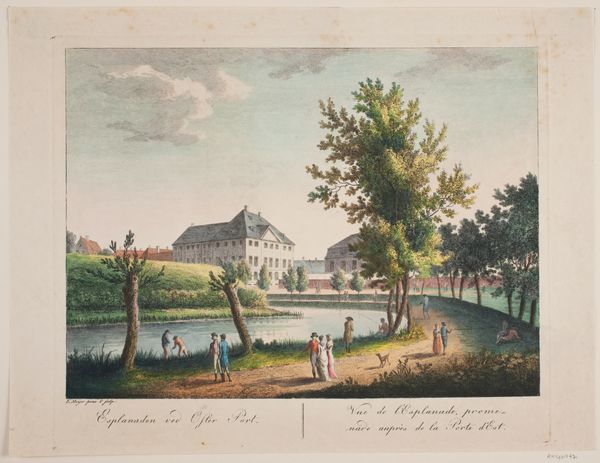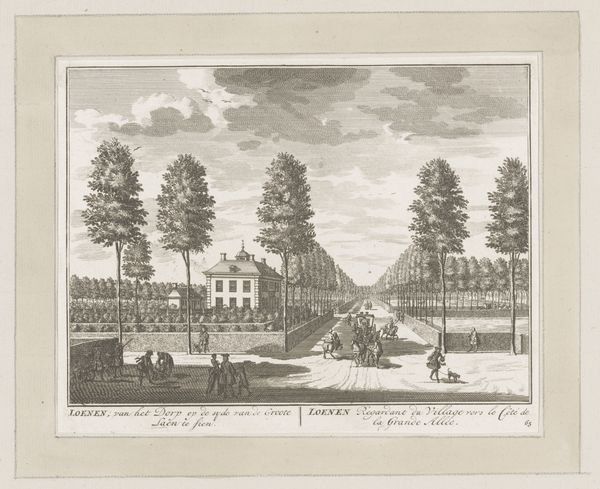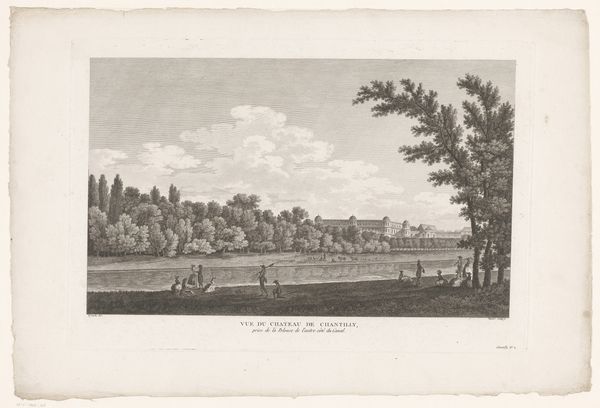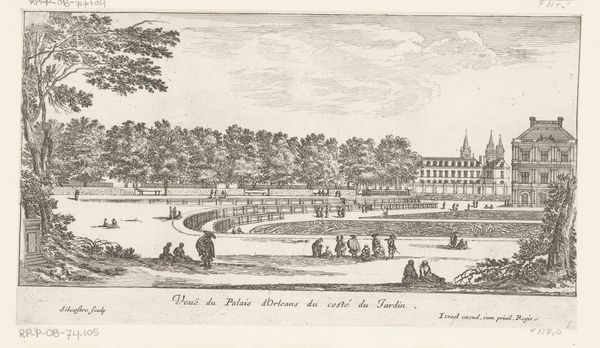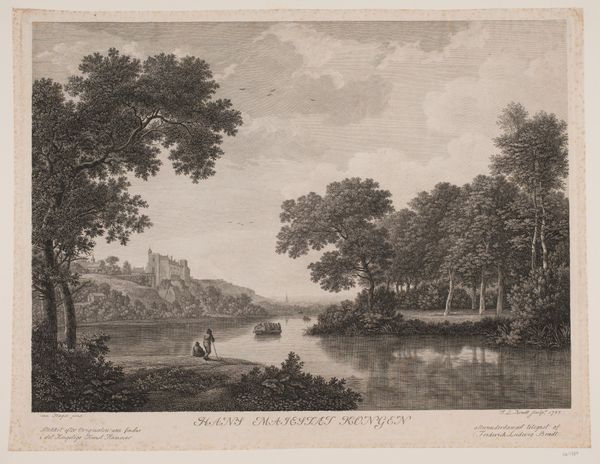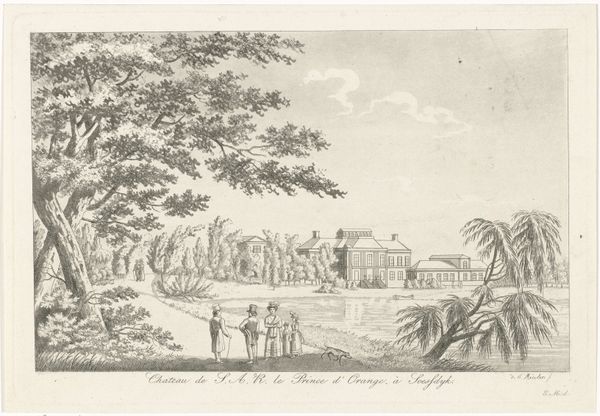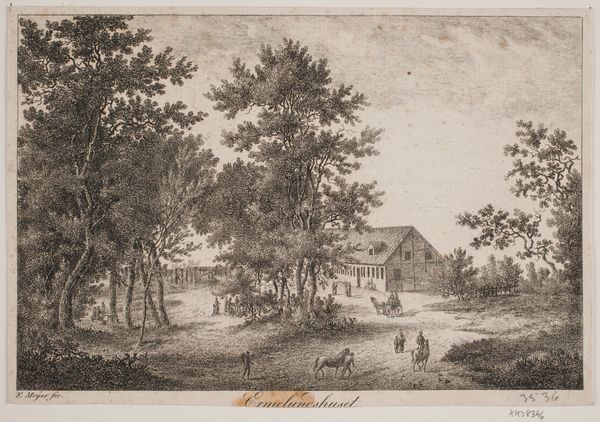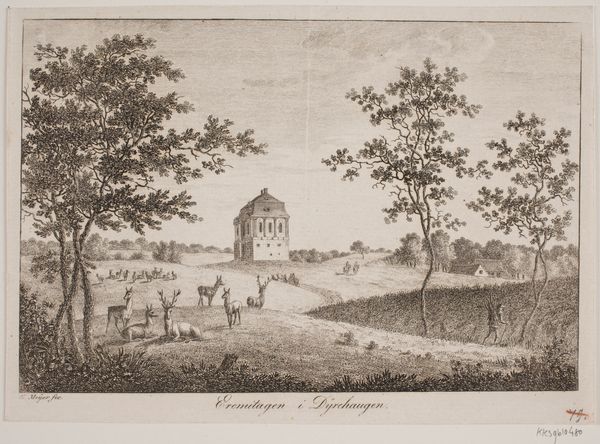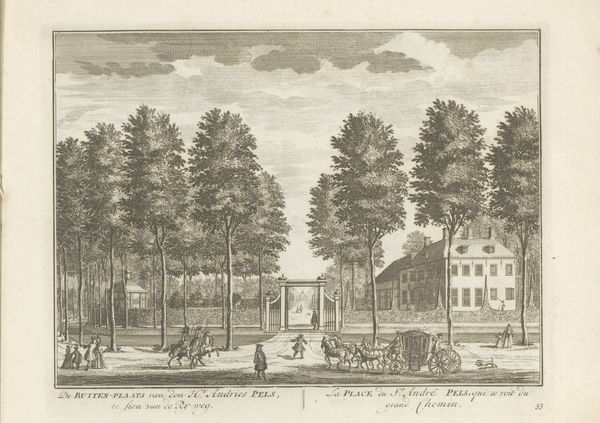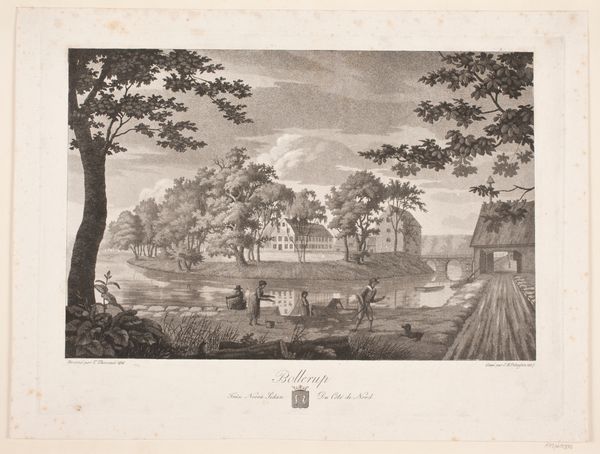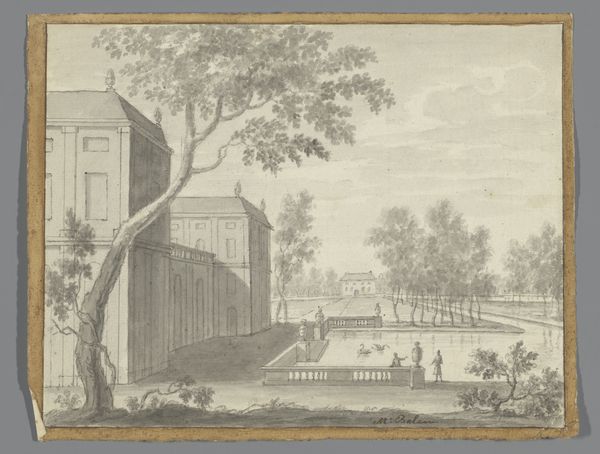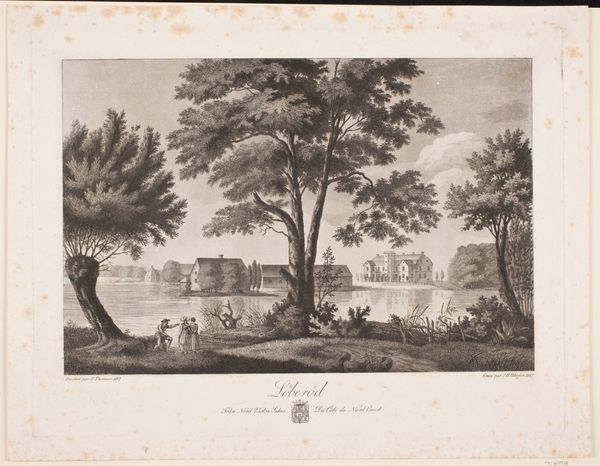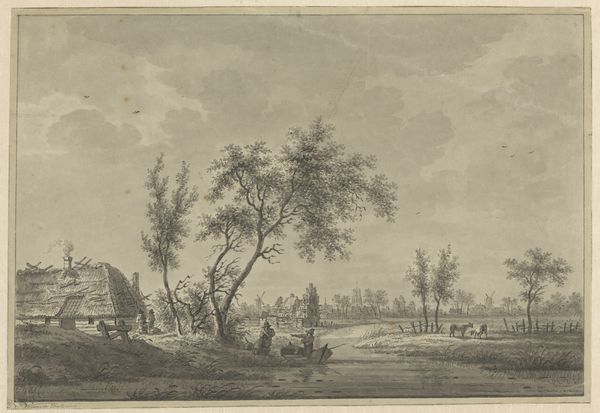
Dimensions: 251 mm (height) x 303 mm (width) (plademaal)
Editor: We're looking at "Esplanaden ved Øster Port," an etching and engraving print made sometime between 1763 and 1809 by Elias Meyer. It has this very calm, almost idyllic feel to it, capturing a stroll in a city park. How do you interpret this work? Curator: This piece resonates deeply when considered within the historical and social context of 18th-century Copenhagen. Parks, like the one depicted, were not just spaces for leisure. They were carefully designed environments reflecting power structures. Who had access to these spaces? How did social class and gender influence participation in such activities as strolling and fishing? The etching technique itself makes this an artwork meant for the masses and not an one-off. Do you see how the park is visually separated from the building beyond? Editor: Yes, the building almost looks removed from the active figures. Curator: Exactly! That building, likely representative of state power, becomes a backdrop against which we must critically evaluate the narratives of public space. This wasn’t a free for all. What appears idyllic might mask a more controlled environment, an urban vision deeply interwoven with notions of citizenship and control. Editor: So, even this seemingly peaceful scene engages with broader questions of access and societal power. I see now there's definitely much more to this than initially meets the eye. Curator: Precisely! Art gives us this critical lens to examine historical realities and the societal structures of today. Editor: Thank you, I appreciate that deeper perspective. I will approach artworks from that perspective moving forward.
Comments
No comments
Be the first to comment and join the conversation on the ultimate creative platform.
